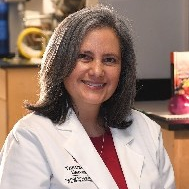Anthocyanins
A special issue of Molecules (ISSN 1420-3049). This special issue belongs to the section "Natural Products Chemistry".
Deadline for manuscript submissions: closed (30 September 2014) | Viewed by 190676
Special Issue Editors
Interests: anthocyanins and polyphenolics; color quality, analytical methods; natural colorants; fruit juice authenciticy
Interests: chemistry of polyphenols; anthocyanins; phytochemicals; analytical chemistry
Special Issues, Collections and Topics in MDPI journals
Special Issue Information
Dear Colleagues,
Research articles on anthocyanin pigments have escalated dramatically in the last 20 years. While PubMed shows 230 anthocyanin publications in the decade from 1982 through 1991, there were 753 from 1992 through 2001, and 3,043 from 2002 through 2011. Anthocyanin pigments have long intrigued scientists, and earlier investigations documented the dynamic nature of their chemistry and their role in the color quality of foods, particularly wine because of its high economic value. Historically, botanists have investigated these pigments in chemotaxonomic and horticultural research to understand the role of anthocyanins in the color quality of flowers and in fruit ripening. More recently, the widely-publicized “French Paradox” made the public aware of the epidemiological evidence that the French, despite a diet high in saturated fats, had a lower than predicted rate of coronary heart disease compared to people in several Western countries with similar risk factors. It was suggested that the consumption of flavonoid-rich foods including anthocyanins that are abundant in red wine and other fruit-based foods might account at least in part for the phenomena. These findings have stimulated an explosion of investigations on various phytochemicals, their bioactivities and their possible role in human health. As part of an early working hypothesis it was suggested that the antioxidant properties of plant food phytochemicals could be a positive predictor of possible health benefits. Numerous investigations revealed that there was a high correlation specifically between the anthocyanin content of some vegetables, fruits and especially berries and their antioxidant activity in vitro. However, determining the in vivo significance of anthocyanin antioxidant activity in human health has been more difficult since studies have shown that anthocyanins are poorly absorbed and rapidly cleared from the body. Notwithstanding there remains abundant in vivo evidence from closely-controlled animal studies, and an increasing amount of human clinical evidence that anthocyanins do indeed provide beneficial health effects. Complementary mechanistic studies have shown that anthocyanins can affect a variety of physiological processes in a beneficial manner. Most encouraging perhaps is recent epidemiological evidence indicating that anthocyanins specifically are associated with a reduced risk of both cardiac events and type 2 diabetes in free-living human populations.
Research articles covering all aspects of anthocyanin chemistry, such as composition, degradative reactions, biosynthesis, their use as natural colorants, and the possible mechanisms for reducing the risks of chronic diseases are welcomed for inclusion in the Special Issue of Molecules.
Prof. Dr. Ronald E Wrolstad
Dr. Monica Giusti
Dr. Wilhelmina Kalt
Guest Editors
Manuscript Submission Information
Manuscripts should be submitted online at www.mdpi.com by registering and logging in to this website. Once you are registered, click here to go to the submission form. Manuscripts can be submitted until the deadline. All submissions that pass pre-check are peer-reviewed. Accepted papers will be published continuously in the journal (as soon as accepted) and will be listed together on the special issue website. Research articles, review articles as well as short communications are invited. For planned papers, a title and short abstract (about 100 words) can be sent to the Editorial Office for announcement on this website.
Submitted manuscripts should not have been published previously, nor be under consideration for publication elsewhere (except conference proceedings papers). All manuscripts are thoroughly refereed through a single-blind peer-review process. A guide for authors and other relevant information for submission of manuscripts is available on the Instructions for Authors page. Molecules is an international peer-reviewed open access semimonthly journal published by MDPI.
Please visit the Instructions for Authors page before submitting a manuscript. The Article Processing Charge (APC) for publication in this open access journal is 2700 CHF (Swiss Francs). Submitted papers should be well formatted and use good English. Authors may use MDPI's English editing service prior to publication or during author revisions.
Keywords
- anthocyanin pigments
- color quality of foods
- natural colorants
- anthocyanin absorption and metabolism
- mechanisms for reducing risk of chronic diseases
Benefits of Publishing in a Special Issue
- Ease of navigation: Grouping papers by topic helps scholars navigate broad scope journals more efficiently.
- Greater discoverability: Special Issues support the reach and impact of scientific research. Articles in Special Issues are more discoverable and cited more frequently.
- Expansion of research network: Special Issues facilitate connections among authors, fostering scientific collaborations.
- External promotion: Articles in Special Issues are often promoted through the journal's social media, increasing their visibility.
- Reprint: MDPI Books provides the opportunity to republish successful Special Issues in book format, both online and in print.
Further information on MDPI's Special Issue policies can be found here.








